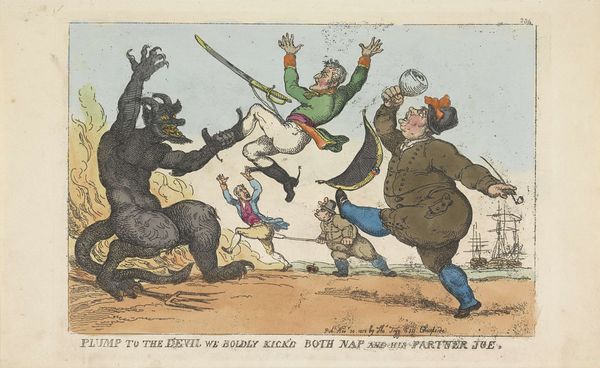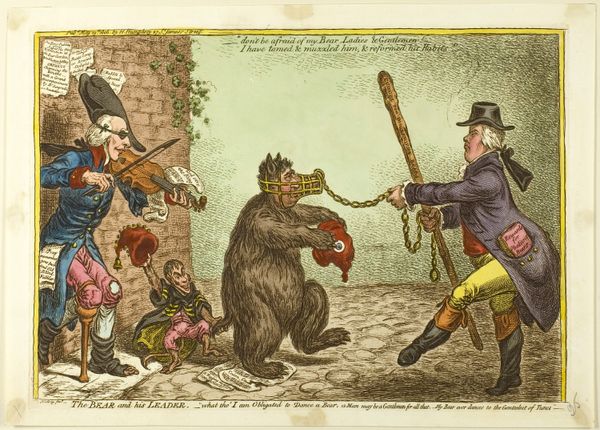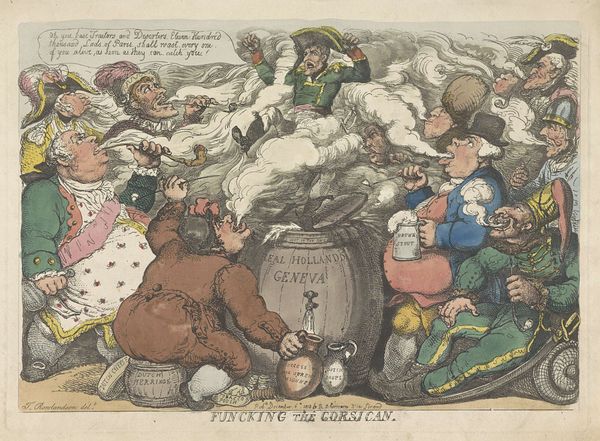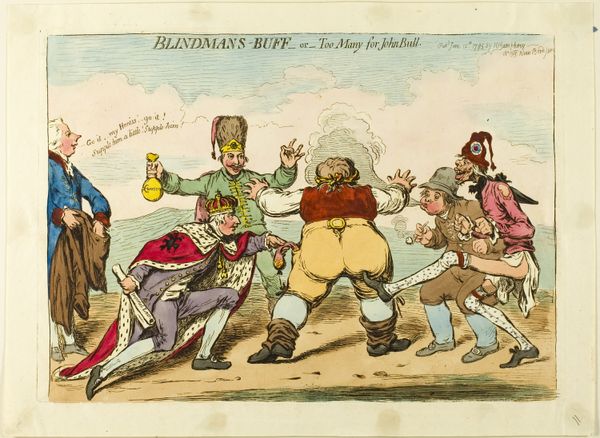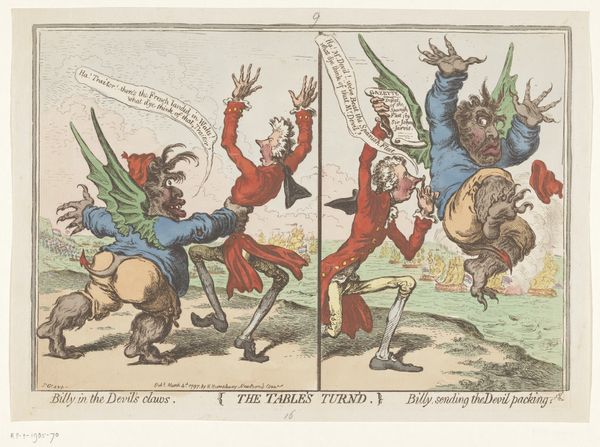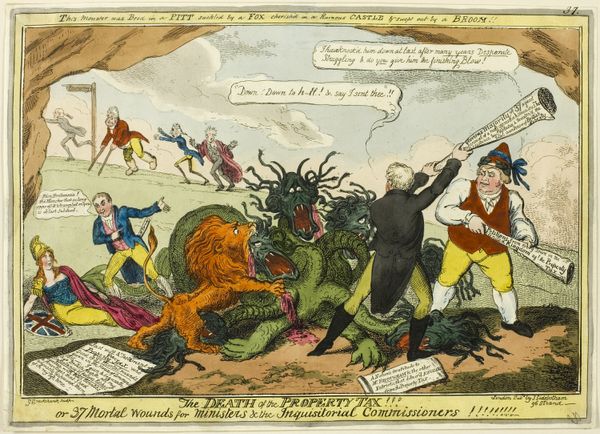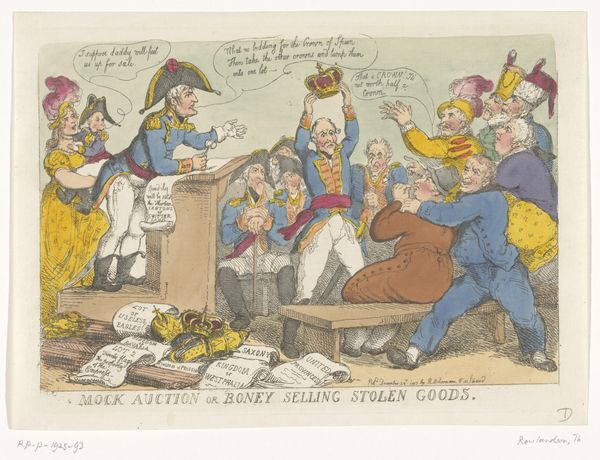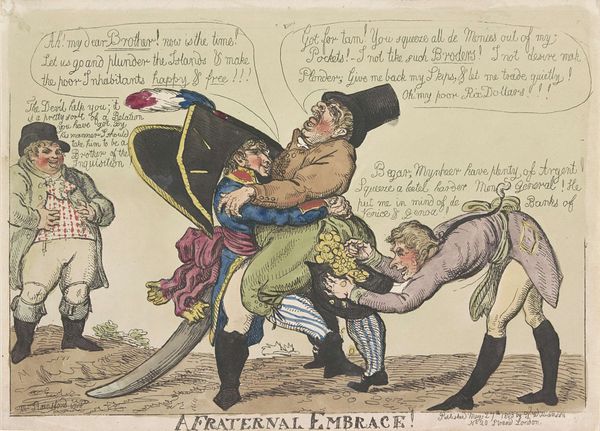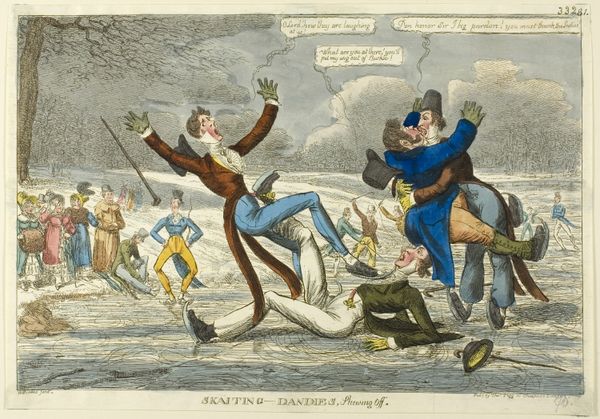
Plump to the Devil We Boldly Kick'd Both Nap and His Partner Joe 30 - 1813
0:00
0:00
Dimensions: image: 22.1 Ã 33.2 cm (8 11/16 Ã 13 1/16 in.) sheet: 25.5 Ã 39.6 cm (10 1/16 Ã 15 9/16 in.)
Copyright: CC0 1.0
Editor: We’re looking at Thomas Rowlandson’s "Plump to the Devil We Boldly Kick'd Both Nap and His Partner Joe." It’s a riot of figures being kicked into what appears to be hell! What’s the story here? Curator: This print, likely from the early 19th century, uses caricature to express British political sentiment. Consider the title – "Nap" probably refers to Napoleon Bonaparte. How does the visual language contribute to this political message? Editor: It’s definitely not flattering. The figures seem exaggerated, almost grotesque. Is this typical of the time? Curator: Precisely! Rowlandson employed satire to shape public opinion. The grotesque figures demonize Napoleon and his allies, playing on nationalistic fervor and anxieties about French power. What does this tell us about the role of art in shaping political discourse? Editor: It shows how art can be a powerful tool for propaganda. I never thought about cartoons that way! Curator: Exactly. By understanding the historical and cultural context, we see how art actively participates in shaping the political landscape.
Comments
No comments
Be the first to comment and join the conversation on the ultimate creative platform.
